
Feel free to add tags, names, dates or anything you are looking for


Dimitri Khakhutashvili (დიმიტრი ხახუტაშვილი) produced a work entitled "The Last Stop" - the figure of a lonely person at the end of his life is sitting with his small bag at a bus stop, lit only by a lantern. In the space which is a unity of colors, this is seemingly the only source of light. However, upon closer observation, the countless strokes that stretch towards the horizon shine with their own unique light. Light is present in the bluish and reddish hues and at the edge of the horizon. This work, as it were, echoes the personal and creative face of Mito Khakhutashvili. Despite the fact that he lived an active and restless life, and with his wonderful sense of humor and playfulness he brought joy and fun everywhere, behind all this there existed an immense creative burden and personal loneliness. Loneliness, in which his creativity grew and became enriched. The creative space of Dmitri Khakhutashvili was filled with such invisible light, and his personality, surrounded by the smallest of material objects (a small bag) and the greatest of creative potential (the multifaceted colorful space), was dedicated to his thoughts.
Dimitri Khakhutashvili is a bright representative of the 1950s generation of Georgian artists, who, notwithstanding a successful career at the Tbilisi State Academy of Arts, remained in the shadows as an artist. After his high-profile application – the diploma work "Artist's studio" (1953) – for a long time he led a kind of silent creative life. He embarked on a personal search, only participated in group exhibitions, and did not attempt to organize any solo exhibitions. All his energy was directed towards teaching - he taught students at the Tbilisi State Academy of Arts. Presentation of the entire spectrum of Dimitri Khakhutashvili's work was unexpected, even among art critics and artists. Dozens of paintings and graphic works, book illustrations, and sketches were revealed, which were almost unknown to the broader public.

Dimitri Khakhutashvili. Last stop. 50x70. Oil on cardboard. 1976
The creative heritage of Dimitri Khakhutashvili, which was produced using various techniques and genres, is an important statement in Georgian painting. The graphic-structural originality of his compositions, his complex vision in the creation of battle scenes, combined with his bold and open emotional style represent an exceptionally thoughtful artist possessing refined taste and technique; one obsessed with constant searching and experimentation, and whose work acquires more charm and significance with time.
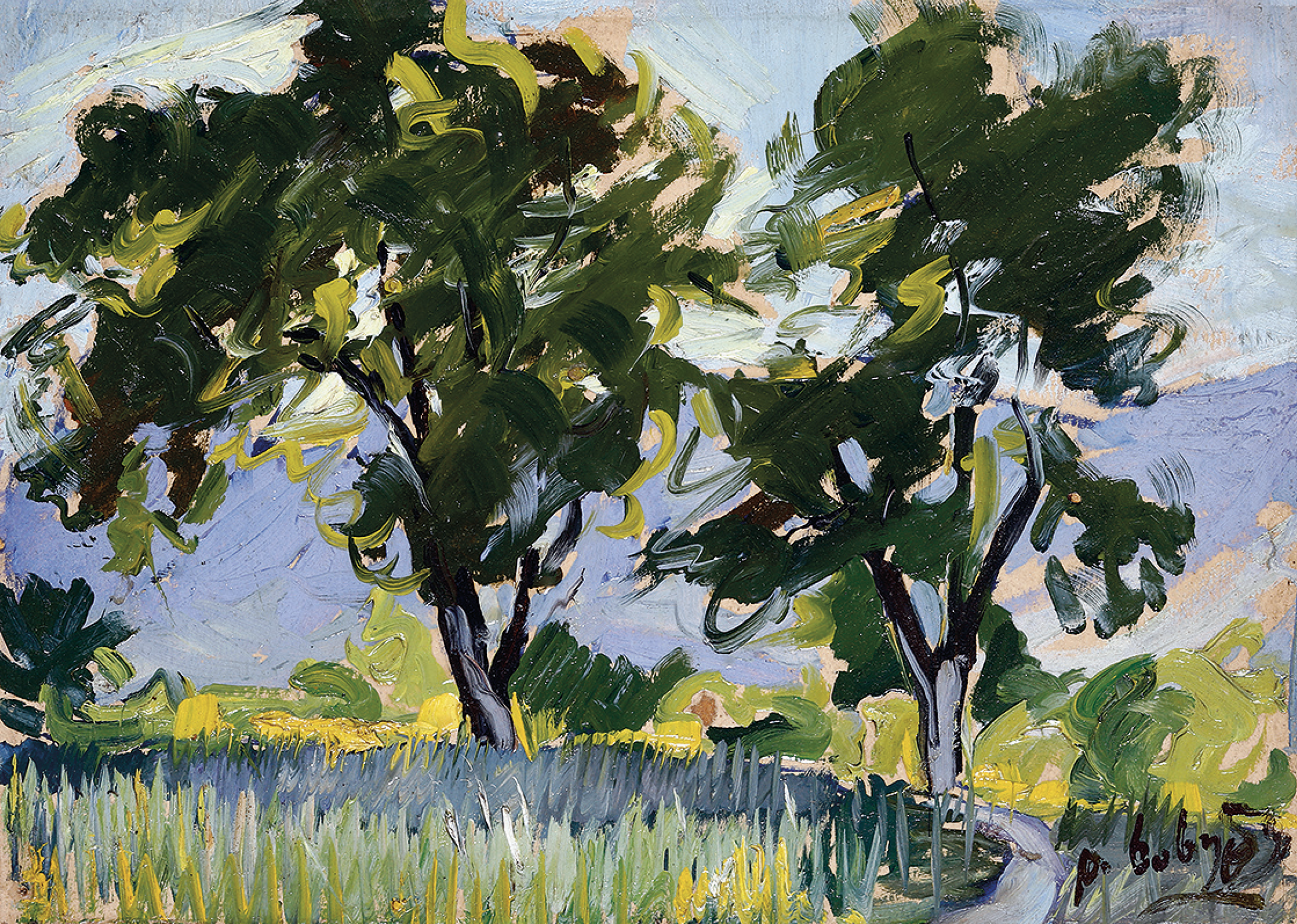
Dimitri Khakhutashvili. Akhalkalaki. 25x35. Oil on cardboard. 1950

Dimitri Khakhutashvili. Red mountain. 25x32. Tempera on cardboard. 1978
The artist's color approach is derived from spectacular sunlight. If his "Red Mountains" intercept the sun in the inner heart of the mountains, then the green trees of his "Akhalkalaki" landscape manage to accumulate solar heat in their foliage, which at first glance appears completely unsightly. The light of the sun is likewise felt in Khakhutashvili’s historical works (study with figures of horses: “They will grow up”).
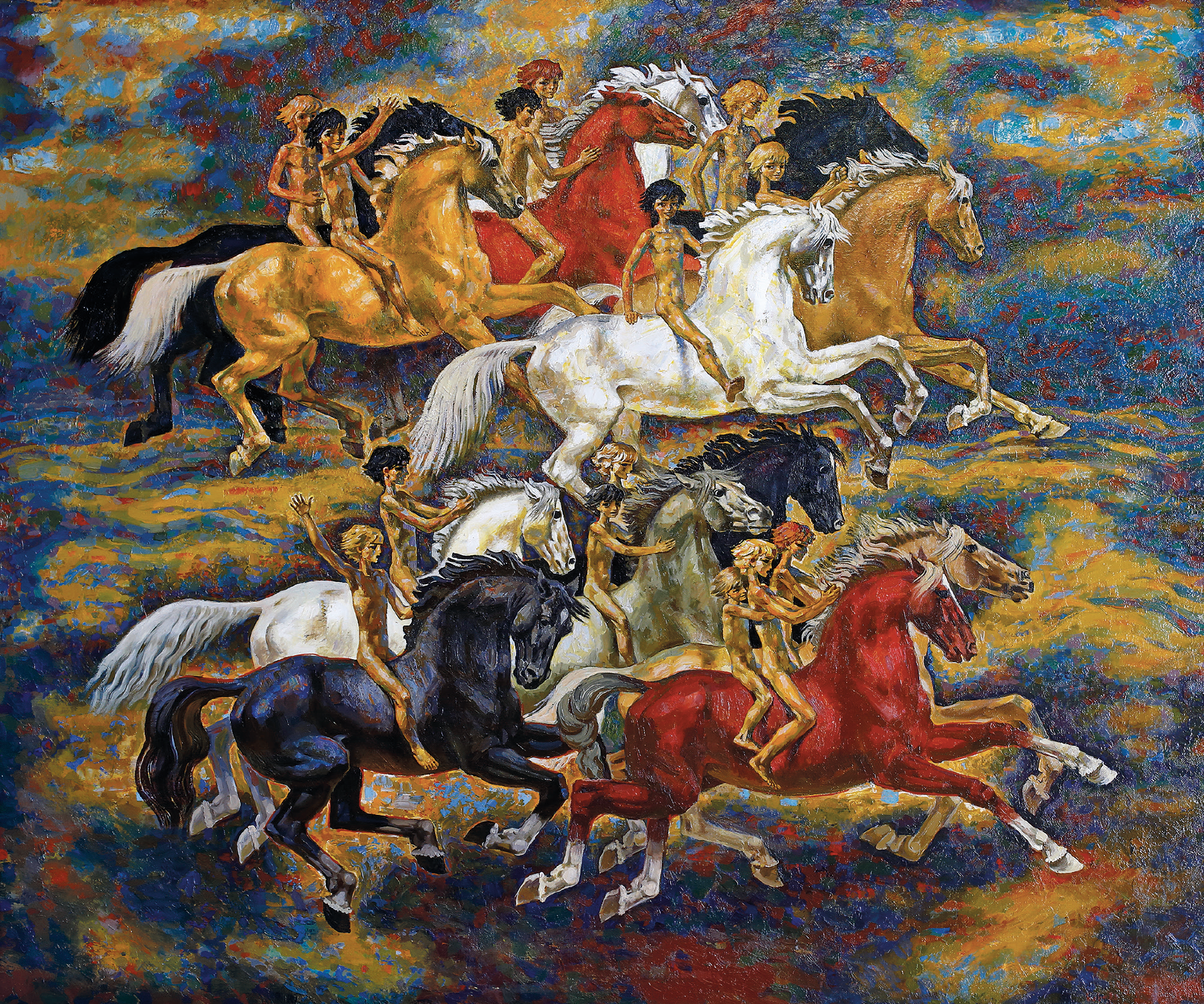

Dimitri Khakhutashvili. White mountains. 40x50. Tempera on paper. 2006
Struggle was an integral part of Mito Khakhutashvili's life; quite obviously this was a creative struggle. This powerful endeavor, both sublime and solemn, is reflected in his historical works – especially in the combat scenes.
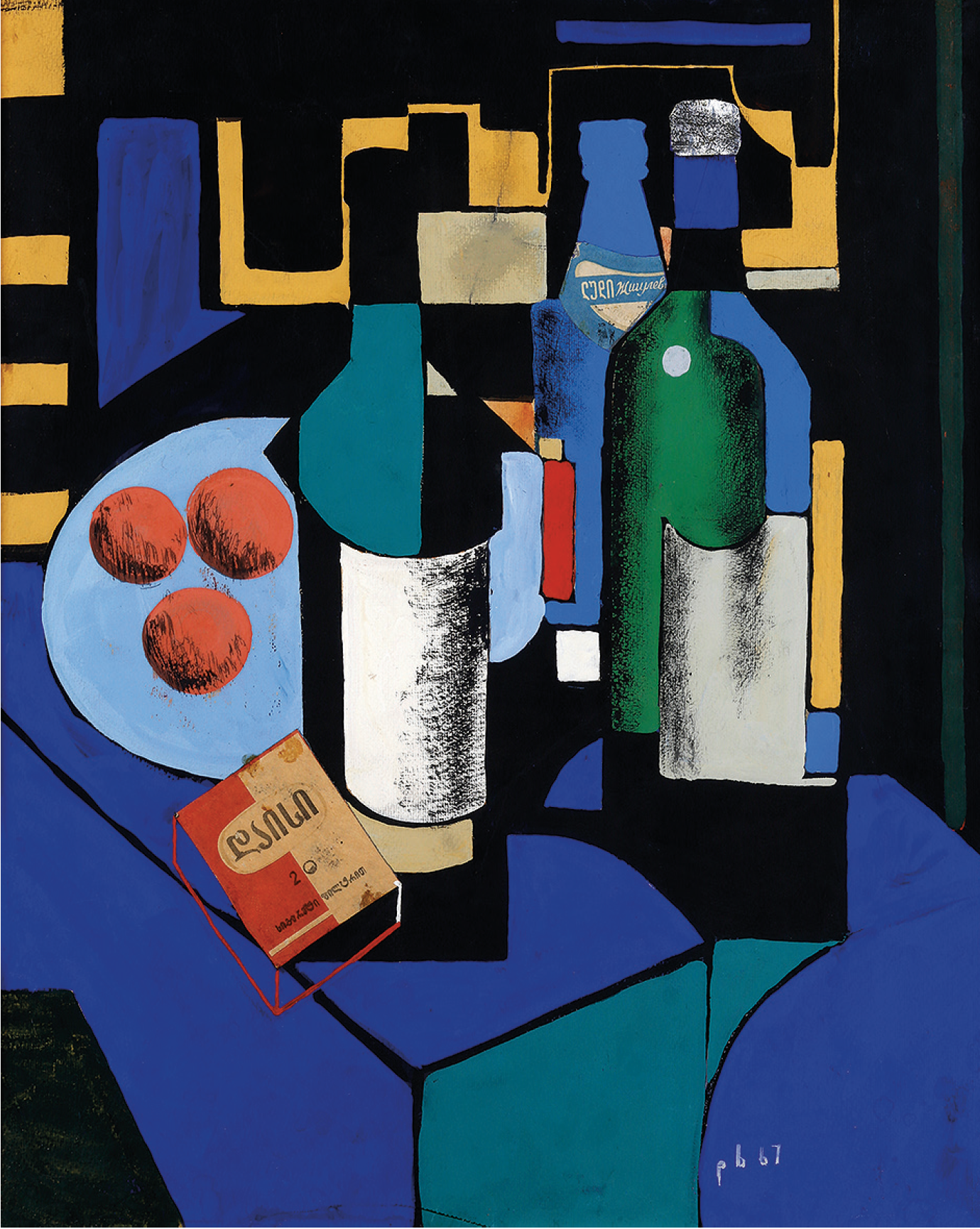
Dimitri Khakhutashvili. Still life. 50x40. Tempera on cardboard. 1967

Dimitri Khakhutashvili. Fight. 50x70. Oil on canvas. 1973
The realities of the 1990s witnessed many problems – including political, social, mental, and moral difficulties. This, in turn, had a great influence on the creative life of the time. Mito Khakhutashvili's internal protest and constant desire for freedom must have been accompanied by ideas that preceded the disintegration of the Soviet Union, and then manifested themselves with full force in the realities of the 90s.

Dimitri Khakhutashvili. Battle. Paper, watercolor. 80x56cm. 1993. This work is part of ATINATI Private Collection

Dimitri Khakhutashvili. Composition. Paper, watercolor. 40x33. 1997. This work is part of ATINATI Private Collection
It is worth remaining one episode from his life, when in the Hermitage he looked through a keyhole into the crypt, and he first beheld the masterpieces of Impressionism. As if his main goal in life was to make the minds of young people much broader, so that instead of thinking behind closed doors, they would be free to do what they wanted. However, it should not have been a chaotic freedom, but rather a free vision, fed by academicism - works of art created freely from the prism of one's own thinking. Dimitri Khakhutashvili’s protest as a creator was not easy. His cityscapes of jagged cliffs and buildings echo this protest. In these works, one can discern the influence of cubism and suprematism, which he had encountered in Paris. This is his direct experience of the era in which he lived. The ruined churches are a vivid expression of this tragedy.

Dimitri Khakhutashvili. Complosition. 40x50. Watercolor on paper. 1996
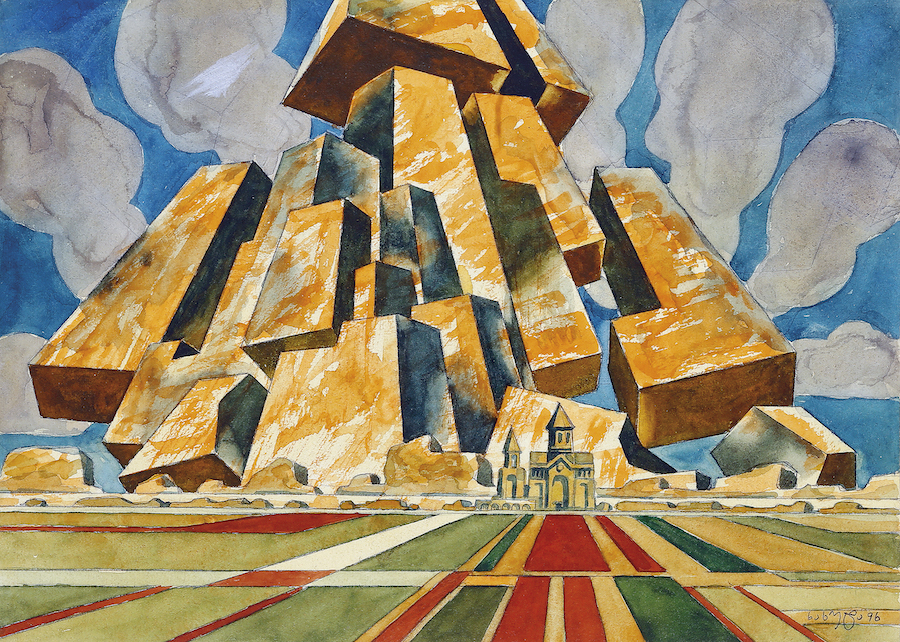
Dimitri Khakhutashvili. Composition. 40x50. Watercolor on paper. 1996

Dimitri Khakhutashvili. Composition. 28x20. Watercolor on paper. 1996
An entire history is contained in these pictures. You are moving from a broken past into the future, where the personal search is uncertain: where will he end up and what will the country veer towards… We see bridges passing into the unknown - these are historical bridges. Dimitri Khakhutashvili’s outstanding decision was to build compositions from a purely graphic-structural point of view, as if the structures themselves built the entire artistic reality. It is significant that cities and different parts of Georgia are collected in one picture. This is a generalized reality, a set of specific nuances that gives us a pronounced feeling - a reflection of the spiritual mood of the creator.

Dimitri Khakhutashvili. Composition. 27x35. Watercolor on paper. 1999

Dimitri Khakhutashvili. Composition. 42x60. Watercolor on paper. 1998
Let’s dwell on one more work: a rigid figure that seems to rise from the asphalt or mountains that possess large limbs - this is the artist’s desire for freedom; it is a search that, although less aesthetic, is also motivated by creative loneliness.

Dimitri Khakhutashvili. Composition. 20x28. Watercolor on paper. 1970
In much the same way that Edvard Munch’s (1863-1944) “Scream" was not merely a formal approach to creating an artistic style, for Dimitri Khakhutashvili this work was the result of a difficult internal struggle and personal self-determination; a form of self-expression. It is no coincidence that Munch's "Scream" reminds us of Khakhutashvili’s "Last Stop". The work of Dimitri Khakhutashvili creates a free space, uniting all genres. It was unacceptable for him to waste time, and as an artist, craftsman, and teacher, he always remained a freedom fighter and a man who knows the price of freedom. His sculpture “In Shackles” is a spiritual rebellion; here we are not confronted with a broken, heavy prisoner. This is yet another symbol of the continuation of the struggle.
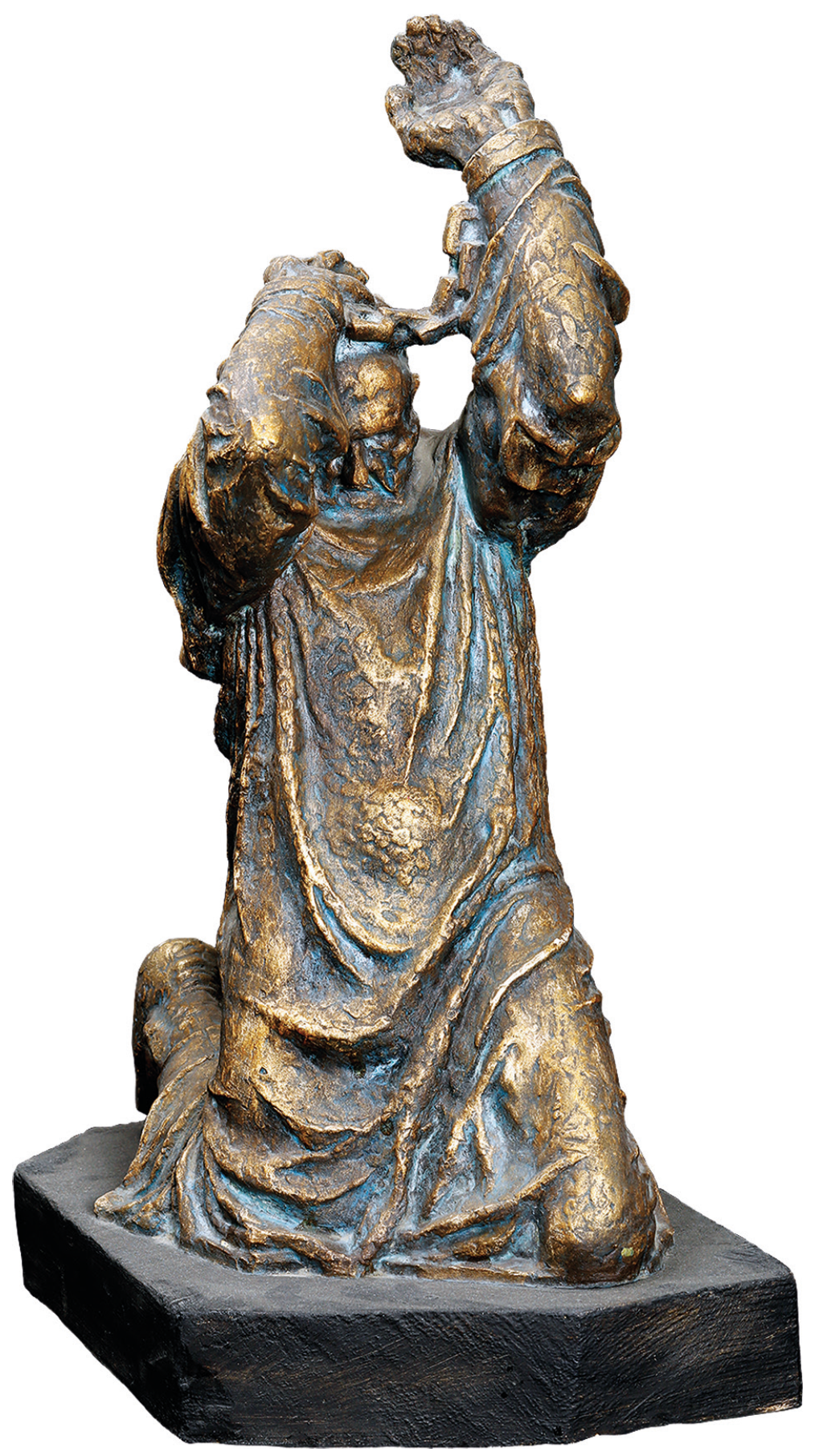
Dimitri Khakhutashvili. Bound. 50x35x25. Bronze. 1975
The impression of the “Last Stop”: the road continues; there is light everywhere. Behind everyday life, illuminated by lanterns, there are great creative spaces that Dimitri Khakhutashvili left us as his creative legacy.